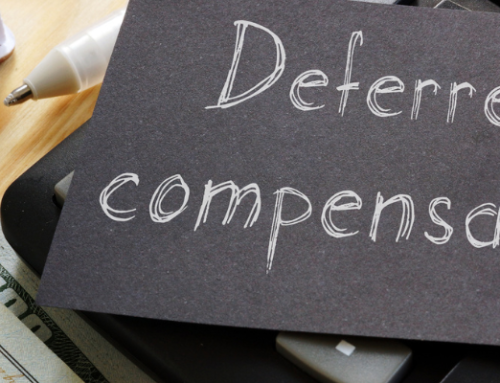By Charles Dean Smith, Jr., CPA
Certain businesses that submitted potentially illegitimate Employee Retention Credit (ERC) claims can now use a new withdrawal process with the IRS. Following the IRS’s halt on new ERC claims due to fraud concerns, this new IRS process will assist business owners concerned about the accuracy of their ERC claims, preventing potential future payroll tax audits, repayments, interest, and penalties.
The ERC Pause
The ERC was a valuable tool for businesses impacted by COVID-19. It helped to keep many businesses open and ensured their employees would remain on the payroll. But it’s a more complicated credit to calculate, and the IRS has specific and well-documented requirements that are not up for negotiation. ERC mills, companies that falsely claim to secure thousands of dollars in tax credits, have taken advantage of thousands of well-intentioned businesses and exposed them to IRS scrutiny and significant tax liabilities, including penalties and interest.
These companies have often used exaggerated or vague definitions of IRS requirements or pressure tactics to convince a business to file a claim. In return, ERC mills will charge their clients a significant percentage of the total payroll tax refund amount – a practice that legitimate CPA firms typically do not follow.
As of mid-September, the IRS had received about 3.6 million ERC claims. 15 percent of that total – nearly 600,000 claims – were received in the 90 days leading up to the IRS’s halt on new claims. Many of those recent claims were expected to be fraudulent or ineligible, thanks in large part to ERC mills and their aggressive marketing tactics and claims of widespread ERC eligibility.
As a result, even legitimate ERC claims will be highly scrutinized moving forward. There are expected to be lengthy IRS processing delays. Taxpayers should be prepared for multiple correspondence requests for additional information on ERC eligibility and calculations.
Taxpayer Warning: Ensure the ERC Claim is Legitimate
Withdrawing an ERC claim means that the business would not get the refund. It also means the business would not be subject to an ERC audit or on the hook for repayment, interest, and penalties if the IRS’s examination would later find the claim to be ineligible.
The IRS can still investigate and pursue intentionally fraudulent ERC claims; this process could lead to possible criminal investigation and prosecution.
The agency has until April 15, 2027 to pursue an audit and erroneous refund action for ERC claims from the third quarter of 2021. This five-year statute extension is more than the standard three-year statute for most tax return reporting, because of changes to the original ERC tax laws that were implemented in 2021. Treasury has proposed extending the statute of limitations for all quarters the ERC could be claimed to give the IRS more time to complete their ERC payroll tax audits.
The statute of limitations could also be considered unlimited if the IRS suspects taxpayer fraud was involved in the ERC tax return filing.
If a refund is issued for any quarter the ERC was available, the IRS currently has two years to determine if it was wrongly issued. And if that happens, the business must pay back the original refund amount plus a potential 20 percent erroneous refund penalty and interest. These penalty and interest amounts could be significant and cause substantial cash flow issues for some small businesses that ERC mills misled.
More Details on ERC Early Withdrawal Process
The new withdrawal option allows certain businesses who were pressured or misled to submit an ERC claim – or who are otherwise unsure of the claim’s accuracy – to withdraw their initial amended payroll tax return submission. This option also includes ERC claims already in process if the business has not cashed or deposited the refund check.
If the refund has not yet been issued, withdrawn claims will be treated as if they were never filed. If the refund has already been issued and the business has already cashed or deposited their refund check, early withdrawal is no longer an option.
Additionally, the business must have:
- Submitted the ERC claim on an adjusted employment return (Forms 941-X, 943-X, 944-X, CT-1X).
- Made no other adjustments to the employment return – only the ERC claim.
As part of this process, the entire ERC claim amount must be withdrawn.
If the early withdrawal process is not an option, businesses can still reduce their penalties and interest exposure by filing a second amended return and adjusting their original ERC claim.
More detailed instructions on how to withdraw an ERC claim are available at IRS.gov/withdrawmyerc, including instructions on how to return an ERC refund check to the IRS that has not yet been cashed or deposited.
In some cases, if a payroll company or a professional employer organization (PEO) was part of the original ERC claim, the payroll company may need to submit the withdrawal request to the IRS on behalf of the business. Some businesses whose ERC claims are still in process may already be under an audit. In those cases, the business should send the withdrawal request to the assigned examiner or respond to the audit notice. In most other cases, a special IRS fax number has been created that businesses can use to fax their ERC withdrawal requests.
New ERC claims filed after September 14 are still on pause until at least December 31, 2023.
The IRS has a useful checklist to help businesses determine if they’re eligible for ERC. For a more personalized assessment, PBMares tax advisors can conduct ERC evaluations and answer any questions about eligibility, amending an ERC claim, or navigating the audit process. To learn more, reach out to Tax Partner Charles Dean Smith, Jr.





